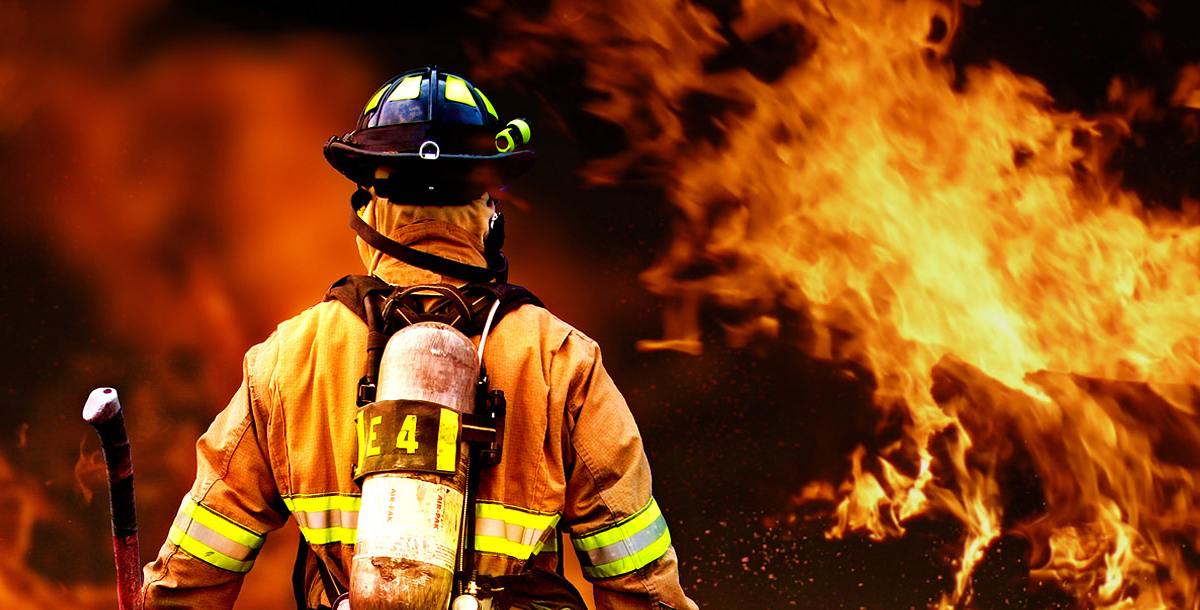This Self-Powered Sensor Can Be Used To Track Firefighters In High-Risk Space
Chander Sinha - Mar 19, 2019

Should the motion stop, the sensor will immediately alert someone outside the dangerous area, and therefore, they can assist in time before the situation gets worse.
- Samsung To Create Ultra-High-Resolution 600MP Camera Sensors
- This YouTuber Built His Own Digital Camera Sensor, You Can Too
- This New Sensor Can Work Underwater, No Need For Batteries
With the similar size of a battery on a normal watch, this tiny sensor, when added to the protective equipment of firefighters, could become a lifesaver in many cases.
![]()
Many researchers working at McMaster University (Hamilton, Ontario) made an announcement last Friday that they had succeeded in creating a self-powered and fireproof sensor. It was designed to track those who work dangerous duties, like miners, steelworkers and firefighters. Many universities, such as University of Chemistry and Technology Prague, UCLA and McMaster University have joined hands to form a research team that have recently introduced their work to the world via an article in the Nano Energy journal.
The sensor is hidden inside the boot’s sole or right under the jacket’s arm. Those are the areas where the device can detect frequent motions. You can charge the sensor via the friction deriving from these motions. This situation has some similarities with the static charge many of us accidentally generate when we slide our socks on the carpet. Should the motion stop, the sensor will immediately alert someone outside the dangerous area, and therefore, they can assist in time before the situation gets worse.

Mechanical engineering professor Ravi Selvaganapathy said:

For many kinds of similar sensors, the biggest challenge hails from the high heat resistance. However, with the self-charging feature, the sensor can easily beat different ones whose batteries tend to breakdown when engaging in hot environments. Furthermore, with the carbon aerogel nanocomposite as key material, this sensor can successfully withstand up to 572° Fahrenheit (300° Celsius), the heat level at which many kinds of wood start to burn.
The researchers are trying to build a connection with a trading partner as a way to expand the consumer market of the device. It is expected to make a huge difference to the ones who work in high-risk environments such as local firefighters.
Islam Hassan, the co-author and a Ph.D. student in mechanical engineering at McMaster said:

Featured Stories

Features - Jul 01, 2025
What Are The Fastest Passenger Vehicles Ever Created?

Features - Jun 25, 2025
Japan Hydrogen Breakthrough: Scientists Crack the Clean Energy Code with...

ICT News - Jun 25, 2025
AI Intimidation Tactics: CEOs Turn Flawed Technology Into Employee Fear Machine

Review - Jun 25, 2025
Windows 11 Problems: Is Microsoft's "Best" OS Actually Getting Worse?

Features - Jun 22, 2025
Telegram Founder Pavel Durov Plans to Split $14 Billion Fortune Among 106 Children

ICT News - Jun 22, 2025
Neuralink Telepathy Chip Enables Quadriplegic Rob Greiner to Control Games with...

Features - Jun 21, 2025
This Over $100 Bottle Has Nothing But Fresh Air Inside

Features - Jun 18, 2025
Best Mobile VPN Apps for Gaming 2025: Complete Guide

Features - Jun 18, 2025
A Math Formula Tells Us How Long Everything Will Live

Features - Jun 16, 2025
Comments
Sort by Newest | Popular